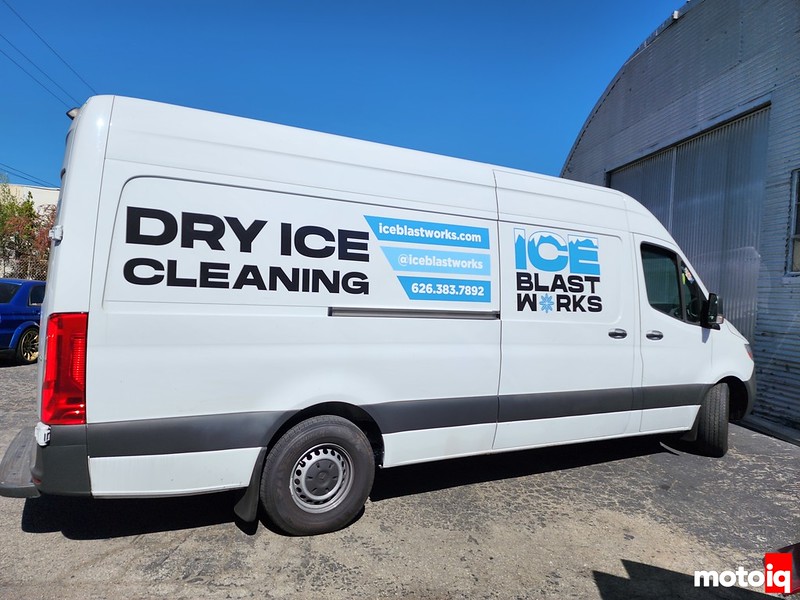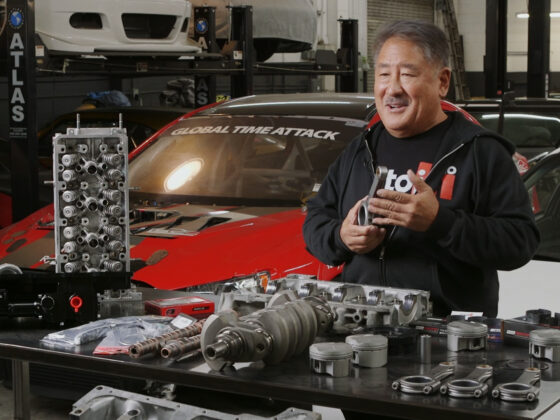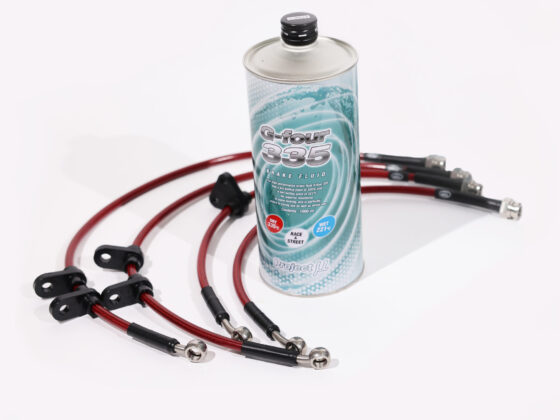
So the engine and engine bay of our Project S13 were really dirty after 30-plus years of use and we wanted to clean it off before we started our engine work. The front main seal of its SR20DET engine was leaking and that had made a mess of the engine and engine bay. Also, the engine was covered in white corrosion as well. The whole engine compartment was grimy and very dirty as well. So before starting off with our engine work, we decided to have everything dry ice blasted to clean it off so it would be less miserable to work on. We had spent the better part of a week on our Project STI getting its engine bay clean and we though that dry ice blasting would save us a bunch of time. We used Ice Blast Works to clean our engine bay as they are a mobile service and since our S13 currently isn’t running, this would save us the time of trailering the car somewhere to get done. Dry ice blasting involves blasting the parts to be cleaned with a mixture of crushed dry ice pellets. The advantage of dry ice blasting is that the exploding dry ice scours away grime, grease corrosion without harming plastics, paint, hoses or electrical parts.

Ice Blast Works uses dry ice “rice” or pellets used just for dry ice cleaning. The rice can be bought at any place where you can buy bulk dry ice. One of the problems to buying your own cleaning rig is that the rice doesn’t keep very long so everytime you have a job, you need to pick up a bin of the stuff, the rice costs about 80 cents a lb and a job like this can go through 150 lbs or so.

The rice is actually 1/8″ in diameter segments of dry ice in varying lengths. I guess you can touch it with your hand for short periods of time although you can see it’s not me doing that!

Although dry ice blasters can be found for a relatively inexpensive price, it’s not like you can just hook them up to your compressor and go to town. First you need a really efficient screw-type compressor with a huge heat exchanger to cool the air once its compressed. You don’t want to blow hot air on your dry ice least it sublimates to CO2 gas before doing its job! That is some intercooler back there!

From the compressor and heat exchanger, the air passes through several moisture traps before heading to a multistage desiccator that makes the air really dry and cools it down even more, sometimes slightly less than ambient temp. You need to make the air really dry so your blaster doesn’t ice up and clog.




6 comments
That before and after shot is amazing. Love it.
after? you mean those shots taken from 10 feet away?
It is what you get. Sorry if you didnt like the pictures.
I apologize for my passive aggressive comment. feel free to delete me being an idiot… or leave it up for all to see…
“This process is much faster and safer than simple green and elbow grease.”
If dry ice blasting isn’t in the budget my go to solution for the past few years has been Scrubbing bubbles and an electric pressure washer.
1. spray liberally in the engine bay until it looks like it snowed there.
2. Let sit for a min or two
3. Rinse with an electric pressure washer (the gas powered ones are too strong).
Now this doesn’t alleviate the need for caution around electrical connectors, but other than moisture in a distributor cap I haven’t had any problems.
I do the same but with simple green. I originally wanted to just clean things up and send it but the project is turning into a complete race car build with pulling the engine….